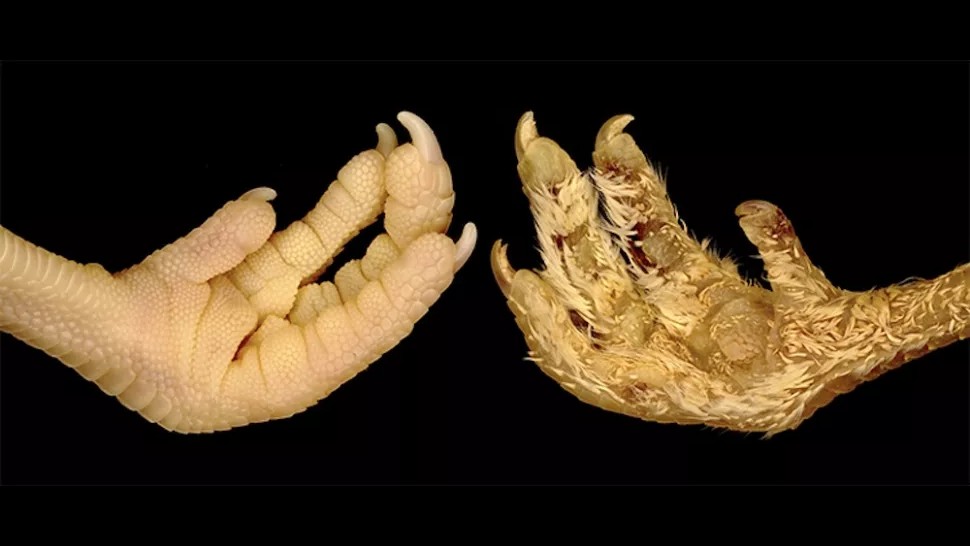
By tweaking a specific gene, scientists have discovered a way to permanently transform the scales on a chicken's feet into feathers. The results provide new insight into the bird's evolutionary origins from dinosaurs.
"Like birds, it's clear today that many dinosaurs were partially covered with feathers as well as scales," said Michel Milinkovitch, a professor in the Department of Genetics and Evolution at the University of Geneva and co-author of the new research. "In birds, it's similar. So, by altering this gene, we can actually expand or decrease the proportion of the body that's covered by feathers or scales depending on when this gene is exactly expressed."
To perform this genetic switcheroo, scientists in Switzerland targeted the sonic hedgehog gene (Shh), which controls a signaling pathway that determines the development of certain characteristics while at the embryonic level. This includes the brain and spinal cord; limbs; and skin appendages, like scales and feathers, according to the study, published May 17 in the journal Science Advances. (And, yes, Shh is named after the titular character of the popular video game.)
In the lab, scientists used a process known as "egg candling," which involves using a light source to illuminate the blood vessels inside an egg. This enabled them to identify a suitable vessel to directly inject the developing embryo with a molecule that activates the Shh pathway. For the study, they used broiler chickens (Gallus gallus domesticus), which are raised for commercial meat production, according to a statement.
Related: Domesticated chickens could wipe out their wild ancestors — by having sex with them
"We conducted the injection on day 11, which is the precise time when scales normally arise on the embryo," lead author Rory Cooper, a postdoctoral fellow in artificial and natural evolution at the University of Geneva, told Live Science. "If we perform the injection even one day too late, the embryo has already begun developing scales."
After the eggs hatched, the scientists noticed the formation of downy juvenile feathers on the chicks' feet. These supersoft feathers were comparable to the feathers covering the rest of their bodies, according to the statement.
"The effect is really clear once they hatch," Cooper said. "And the change lasts. Once the chickens develop the feathers, they don't go back to having scales on the targeted area."
The researchers were surprised at how easy it was to shape-shift the chickens' feet and said it offers the team a new understanding of how these animals evolved.
"Feathers are a function of change," Milinkovitch told Live Science. "In dinosaurs, feathers could have been used to regulate the animal's internal temperature or as a colorful display. Flight came later. By changing the expression of one gene, we were able to create a cascade of developmental effects that triggered feather growth, offering new insights into the evolution of these animals."







